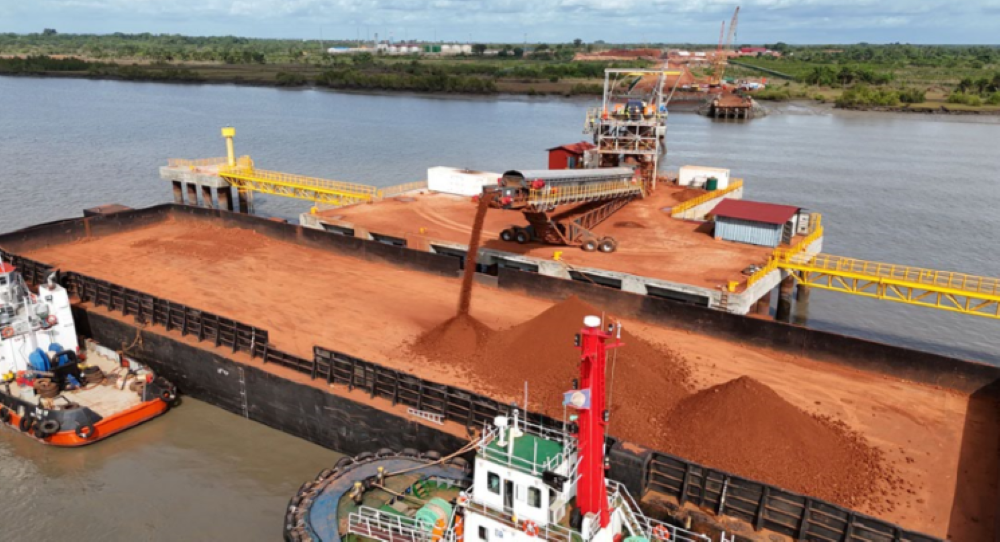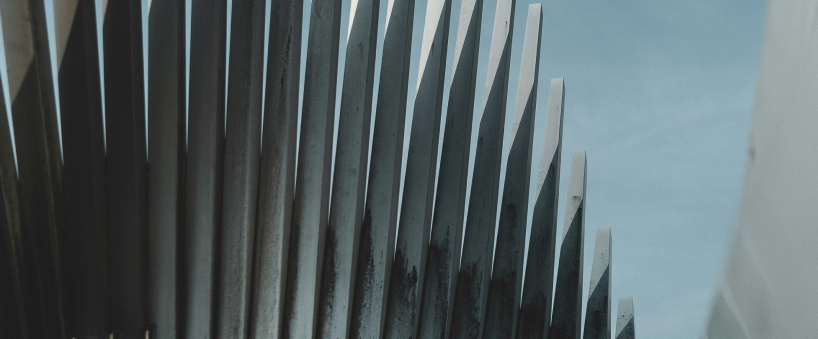

The Bon Ami Project in Guinea, which began back in 2018, have successfully implemented the robust and high-capacity Telestack barge loading systems, helping to meet the demanding conditions prevailing in bauxite imports. The design of the project aims towards rapid construction, which started its production in Q2 2024.

Image source: telestack.com
In order to address the operational requirements of the Bon Ami Project, a Telestack TB 58 barge loader with a capacity of 3,000 tph at a bulk density of 1.5 T/m³ was installed. Purpose-built for handling bauxite, this high-capacity unit is integrated into a streamlined system where it is fed by two Buffalo reclaim feeders, assisted by dozers.
The material is transferred onto a 1 km jetty conveyor for efficient delivery. This setup is designed to load vessels of up to 12,000 DWT, with a 30-metre beam and a 105-metre Length Overall (LOA), ensuring full barge coverage without requiring barge warping during the loading process.
Challenges requiring a handling solution
Bauxite, due to its distinct material properties, presents specific handling challenges that must be addressed for efficient operations. For the Bon Ami Project, several key material and application parameters have been defined. The material in question is bauxite, with a bulk density of approximately 1.5 tonnes per cubic metre and a maximum lump size of up to 150 mm.
The nominal handling rate is targeted at 2,700 tonnes per hour, with a design capacity of 3,000 tonnes per hour. Bauxite in this context is characterised as both sticky and free-flowing, adding complexity to handling and transport processes. Additionally, the project environment experiences high humidity levels, with ambient temperatures ranging between 21°C and 37°C.
Solution: Telestack barge loader
The Telestack barge loader installed for the Bon Ami Project is equipped with a range of features to ensure high performance, durability and operational efficiency in demanding marine conditions. Built with structural integrity in mind, the unit weighs 115 tonnes and meets rigorous engineering standards. Material flow is precisely managed through a Variable Speed Drive (VSD) that controls belt speed.
For operational control, the system includes a stainless steel, air-conditioned local control panel integrated with a Siemens S7 PLC and Profibus communication, linked to the Central Control Room (CCR).
Safety and maintenance are prioritised with features such as belt drift and rip switches, Flexco Mineline primary and secondary belt scrapers and tracking rollers on both the top and return sides. Engineered for longevity, the system includes a marine-grade paint finish, galvanised dust covers on the outer conveyor, canvas telescopic dust covers on the inner conveyor and dual access galvanised walkways.
Heavy-duty components include a 1,400 mm wide X-grade belt and 152 mm (6-inch) trough rollers, with 12 mm Hardox 400 liners at the feedboot and transfer points to enhance wear resistance. Additionally, dust suppression spray bars are installed at key transfer points to support environmental compliance.
Concluding statement
The design addresses key operational challenges, including the handling of sticky materials, operator safety and comfort and resilience in corrosive marine environments. These considerations support the project’s objective of achieving efficient and consistent performance. Telestack’s technical capabilities aid in delivering fit-for-purpose bulk material handling solutions for complex mining operations such as bauxite.
Responses








